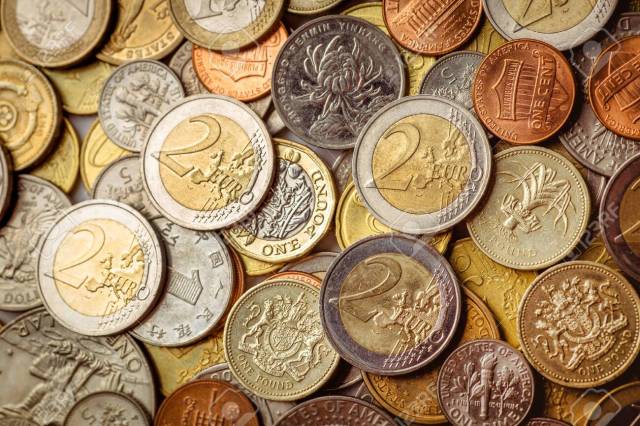A coin is a small, flat, round piece of metal or plastic used primarily as a medium of exchange or legal tender. They are standardized in weight, and produced in large quantities at a mint in order to facilitate trade. They are most often issued by a government. Coins often have images, numerals, or text on them. Obverse and its opposite, reverse, refer to the two flat faces of coins and medals. In this usage, obverse means the front face of the object and reverse means the back face. The obverse of a coin is commonly called heads, because it often depicts the head of a prominent person, and the reverse tails.
Coins are usually metal or alloy, or sometimes made of manmade materials. They are usually disc shaped. Coins made of valuable metal are stored in large quantities as bullion coins. Other coins are used as money in everyday transactions, circulating alongside banknotes. Usually the highest value coin in circulation is worth less than the lowest-value note. In the last hundred years, the face value of circulation coins has occasionally been lower than the value of the metal they contain, for example due to inflation. If the difference becomes significant, the issuing authority may decide to withdraw these coins from circulation, possibly issuing new equivalents with a different composition, or the public may decide to melt the coins down or hoard them.
The earliest coins are mostly associated with Iron Age Anatolia of the late 7th century BCE, and especially with the kingdom of Lydia. Early electrum coins were not standardized in weight, and in their earliest stage may have been ritual objects, such as badges or medals, issued by priests. The unpredictability of the composition of naturally occurring electrum implied that it had a variable value, which greatly hampered its development.

